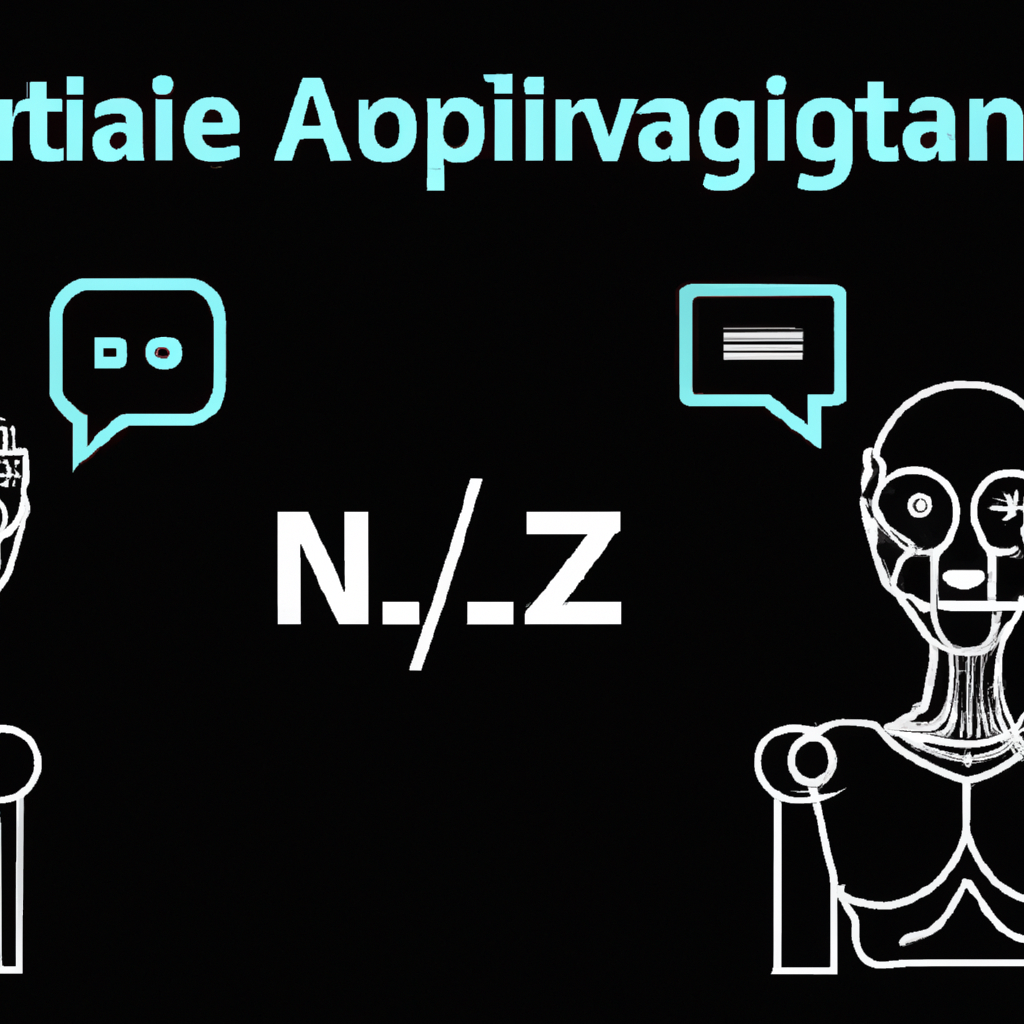-
Table of Contents
“Unlock the Power of AI and Language Processing: Unlocking New Possibilities for Natural Language Understanding.”
Introduction
Artificial Intelligence (AI) and Language Processing (NLP) have become increasingly important in the modern world. AI and NLP are used to process and understand natural language, allowing machines to interact with humans in a more natural way. AI and NLP have made significant advancements in recent years, allowing for more accurate and efficient language processing. AI and NLP are used in a variety of applications, from voice recognition and natural language processing to machine translation and text summarization. AI and NLP are also being used to create more intelligent chatbots and virtual assistants. AI and NLP are revolutionizing the way we interact with machines, and the possibilities are endless.
Exploring the Benefits of Natural Language Processing (NLP) in AI
Natural Language Processing (NLP) is an exciting field of Artificial Intelligence (AI) that is revolutionizing the way we interact with computers. NLP is a branch of AI that focuses on understanding and interpreting human language. It enables computers to understand and respond to human language, allowing us to communicate with them in a more natural way.
NLP has a wide range of applications, from helping us to better understand customer feedback to improving the accuracy of automated translations. It can also be used to create more natural-sounding virtual assistants, such as Amazon’s Alexa and Apple’s Siri.
One of the most exciting benefits of NLP is its ability to help us better understand customer feedback. By using NLP, companies can quickly and accurately analyze customer feedback and identify areas of improvement. This can help them to better understand their customers’ needs and develop better products and services.
NLP can also be used to improve the accuracy of automated translations. By using NLP, machines can better understand the nuances of language and provide more accurate translations. This can be especially useful for businesses that need to communicate with customers in multiple languages.
Finally, NLP can be used to create more natural-sounding virtual assistants. By using NLP, machines can better understand the context of conversations and provide more natural-sounding responses. This can help to create a more natural and engaging experience for customers.
Overall, NLP is an exciting field of AI that is revolutionizing the way we interact with computers. It has a wide range of applications, from helping us to better understand customer feedback to improving the accuracy of automated translations. It can also be used to create more natural-sounding virtual assistants. By leveraging the power of NLP, businesses can create more engaging customer experiences and better understand their customers’ needs.
How AI is Transforming Language Processing
AI is revolutionizing the way we process language. From natural language processing (NLP) to machine translation, AI is transforming the way we interact with language.
NLP is a branch of AI that focuses on understanding and interpreting human language. It enables machines to understand and respond to human language, allowing us to interact with computers in a more natural way. NLP is used in a variety of applications, from chatbots to virtual assistants.
Machine translation is another area where AI is making a big impact. AI-powered translation tools are able to quickly and accurately translate text from one language to another. This technology is being used to bridge language barriers and make communication easier.
AI is also being used to improve the accuracy of grammar and spell checkers. AI-powered tools are able to detect errors in grammar and spelling more accurately than traditional methods. This technology is being used to help people write more accurately and efficiently.
Finally, AI is being used to generate content. AI-powered tools are able to generate content that is similar to human-written content. This technology is being used to create content for websites, blogs, and other online platforms.
AI is transforming the way we process language, making it easier to communicate and understand each other. From natural language processing to machine translation, AI is revolutionizing the way we interact with language.
The Impact of AI on Language Translation
The impact of artificial intelligence (AI) on language translation is undeniable. AI has revolutionized the way we communicate with people who speak different languages. With AI-powered language translation, it is now easier than ever to bridge the language gap and communicate with people from all over the world.
AI-powered language translation is incredibly accurate and efficient. It can quickly and accurately translate text from one language to another. This means that you can communicate with someone in their native language without having to learn it yourself. AI-powered language translation also eliminates the need for human translators, which can be expensive and time-consuming.
AI-powered language translation also helps to reduce language barriers. By providing accurate translations, it makes it easier for people to understand each other and communicate effectively. This can help to foster better relationships between people from different cultures and backgrounds.
Finally, AI-powered language translation can help to improve the accuracy of machine translation. By using AI, machines can learn from their mistakes and become more accurate over time. This means that machine translation can become more reliable and accurate, which can help to reduce errors and improve the quality of translations.
Overall, the impact of AI on language translation is undeniable. AI-powered language translation is accurate, efficient, and cost-effective. It can help to reduce language barriers and improve the accuracy of machine translation. With AI-powered language translation, it is now easier than ever to communicate with people from all over the world.
The Role of Machine Learning in Language Processing
Machine learning has become an increasingly important tool in language processing. It is used to help computers understand and interpret natural language, allowing them to interact with humans in a more natural way.
Machine learning algorithms are used to analyze large amounts of data and identify patterns in the data. This allows computers to recognize words, phrases, and other language elements. It also helps them to understand the context of a conversation and respond appropriately.
Machine learning can also be used to create language models. These models are used to generate new sentences and phrases based on existing data. This can be used to create more natural-sounding conversations or to generate new ideas.
Machine learning can also be used to improve the accuracy of language processing tasks. For example, it can be used to identify errors in grammar or spelling. It can also be used to detect and correct errors in machine translation.
Finally, machine learning can be used to create more accurate language processing systems. By analyzing large amounts of data, machine learning algorithms can identify patterns in the data and use them to create more accurate language processing systems. This can help computers understand and interpret natural language more accurately.
Overall, machine learning has become an important tool in language processing. It can be used to analyze large amounts of data, create language models, improve accuracy, and create more accurate language processing systems. By using machine learning, computers can understand and interpret natural language more accurately, allowing them to interact with humans in a more natural way.
Understanding the Challenges of AI-Powered Language Processing
AI-powered language processing is an exciting and rapidly growing field of technology. It has the potential to revolutionize the way we interact with computers and machines, allowing us to communicate with them in natural language. However, there are a number of challenges that must be overcome before this technology can reach its full potential.
One of the biggest challenges of AI-powered language processing is understanding the context of a conversation. Natural language is often ambiguous and can be interpreted in different ways depending on the context. AI systems must be able to understand the nuances of language and interpret it correctly in order to provide accurate responses.
Another challenge is dealing with the vast amount of data that is required to train AI systems. Natural language processing requires large datasets of text in order to learn how to interpret language correctly. This data must be carefully curated and labeled in order to ensure accuracy.
Finally, AI-powered language processing must be able to handle the complexity of human language. Natural language is full of slang, idioms, and other nuances that can be difficult for machines to understand. AI systems must be able to recognize these nuances and interpret them correctly in order to provide accurate responses.
These challenges are not insurmountable, however. With the right tools and techniques, AI-powered language processing can become a reality. By understanding the challenges and working to overcome them, we can unlock the potential of this technology and create a new era of human-computer interaction.
Conclusion
AI and language processing have come a long way in recent years, and the advancements and applications in NLP have been remarkable. AI and NLP have enabled us to create more accurate and efficient language processing systems, which can be used to improve the accuracy of natural language understanding and machine translation. AI and NLP have also enabled us to create more powerful and sophisticated chatbots, which can be used to provide customer service and automate tasks. AI and NLP have also enabled us to create more intelligent search engines, which can be used to provide more accurate and relevant search results. AI and NLP have also enabled us to create more powerful and sophisticated voice recognition systems, which can be used to improve the accuracy of voice recognition and speech recognition. AI and NLP have also enabled us to create more powerful and sophisticated text-to-speech systems, which can be used to improve the accuracy of text-to-speech and speech synthesis. AI and NLP have also enabled us to create more powerful and sophisticated natural language processing systems, which can be used to improve the accuracy of natural language understanding and machine translation. AI and NLP have also enabled us to create more powerful and sophisticated machine learning systems, which can be used to improve the accuracy of machine learning algorithms. AI and NLP have also enabled us to create more powerful and sophisticated deep learning systems, which can be used to improve the accuracy of deep learning algorithms. AI and NLP have also enabled us to create more powerful and sophisticated artificial intelligence systems, which can be used to improve the accuracy of artificial intelligence algorithms. AI and NLP have also enabled us to create more powerful and sophisticated natural language processing systems, which can be used to improve the accuracy of natural language understanding and machine translation. AI and NLP have also enabled us to create more powerful and sophisticated machine learning systems, which can be used to improve the accuracy of machine learning algorithms. AI and NLP have also enabled us to create more powerful and sophisticated deep learning systems, which can be used to improve the accuracy of deep learning algorithms. AI and NLP have also enabled us to create more powerful and sophisticated artificial intelligence systems, which can be used to improve the accuracy of artificial intelligence algorithms. In conclusion, AI and language processing have come a long way in recent years, and the advancements and applications in NLP have been remarkable. AI and NLP have enabled us to create more accurate and efficient language processing systems, which can be used to improve the accuracy of natural language understanding and machine translation.





